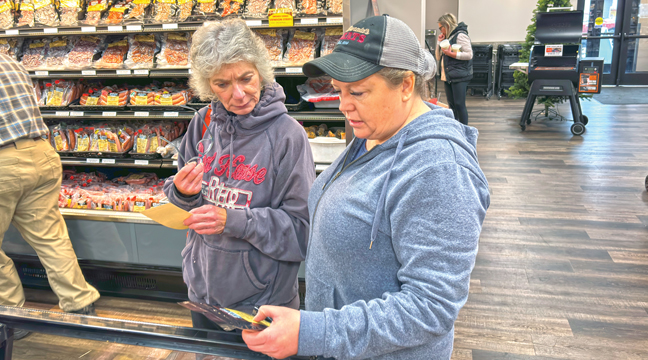Most people dream of traveling to far away places, Steve and Glenda Sakry actually do.
The Sakrys enjoy traveling, and have gone on a number of trips with family and friends, most recently on a three-week vacation to Australia and New Zealand this past summer.
Joining them were 14 friends and family members, the largest group they’ve traveled with. The trip was booked through Overseas Adventure Travel (O.A.T.), a company that specializes in “active adventures,” and provides a local tour guide that stays with the group for their entire trip.
The flight to Australia from Los Angeles was 16 hours, however their son, Bart, had purchased them first class tickets, which made the trip much more enjoyable.
Although late summer in the U.S., it was early spring in Australia, so the temperatures were comfortable, mostly in the high 40s to low 50s, rising into the 80s as they traveled closer to the equator.
It was a good time of year to visit as the flies weren’t out yet, most of the poisonous rainforest inhabitants were still hibernating, and it wasn’t peak tourist season.
The group landed in Melbourne, where they took a coastal drive and toured an old prison and gallows. At Uluru-Kata Tjuta National Park they saw native drawings at Ayers Rock, a large formation in the outback that’s sacred to the Aboriginal people.
Their tour guide, Maree, told them Britain realized they couldn’t colonize Australia with only the male convicts they had shipped there, so they began arresting lower class women on trumped up charges and sending them as well.
They also learned that until the 1960s the Aborigines were poorly treated, much like Native Americans in the U.S.
At Palm Cove some of their group snorkeled at the Great Barrier Reef, and they were warned about tiny poisonous “marine stingers,” or jellyfish. They had tea in the middle of a rain forest, and met Aborigines, who don’t believe in getting their picture taken.
Back in Sydney the group toured the Opera House, climbed to the top of the Sydney Harbor Bridge, and admired local architecture.
They saw numerous wineries, and in an example of how small today’s world has become, some of the wine barrels said “Minnesota,” which is where the oak had come from.
There were also numerous war memorials. Japan bombed Australia in WWII, and Maree explained Britain got many of their soldiers from there during the war, considering them expendable.
They had parrots fly down and land on them. They saw Tasmanian devils, koalas, dingoes, emus and wombats in a nature preserve, and in the outback they observed kangaroos fighting, first by boxing and then by rearing back on their tails and kicking.
New Zealand was the next leg of their journey. While there they took a bus to Fairly, where they split into three groups, each of them spending a night with a farm family, where they watched sheep sheering and learned about farm life.
While traveling through the rainforests they saw saltwater crocodiles along the coastline, as well as parrots, snakes and lizards. They found Milford Sound and Queenstown beautiful, and went to a haunted house claiming to be the world’s scariest.
The Sakrys enjoy learning local history and experiencing native culture when they travel. Throughout their three-week trip they tried a lot of the local food, discovering kangaroo tastes much like venison. Bathrooms were labeled “blokes” and “sheilas,” signs warned of kangaroos, and yield signs read, “make way.”
They learned New Zealanders call Australians “aussies,” and Australians call New Zealanders “kiwis,” after a bird found there.
They recommend anyone interested in traveling try guided tours, as so much more will be learned and experienced, including local history and places not found on tourist maps.
Back from their latest adventure the Sakrys are already planning their next, a Paris and Normandy European river cruise.







